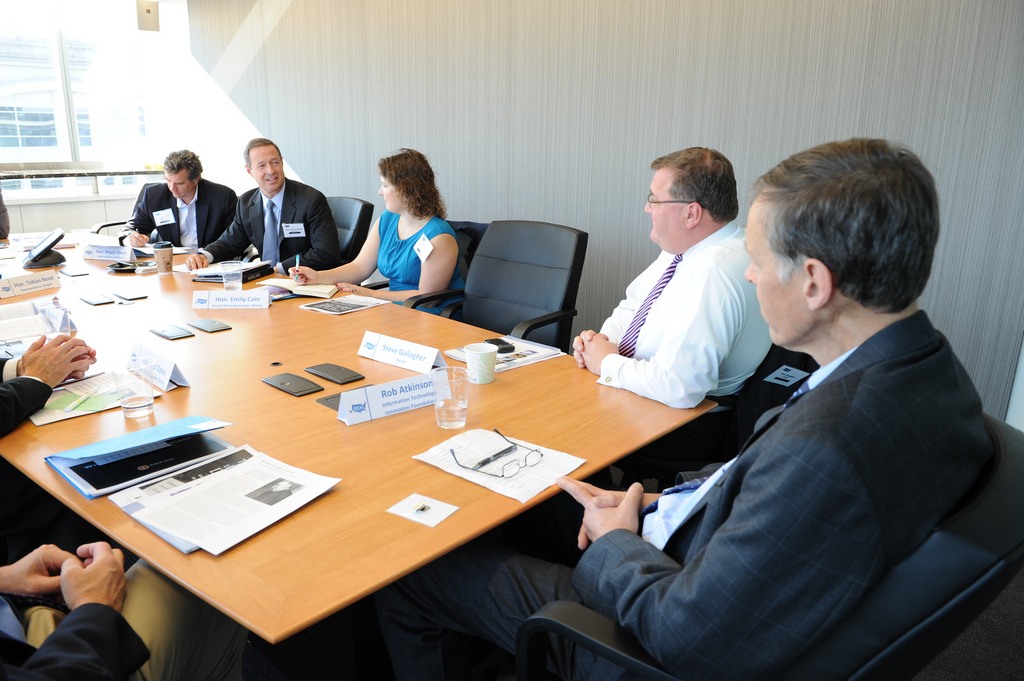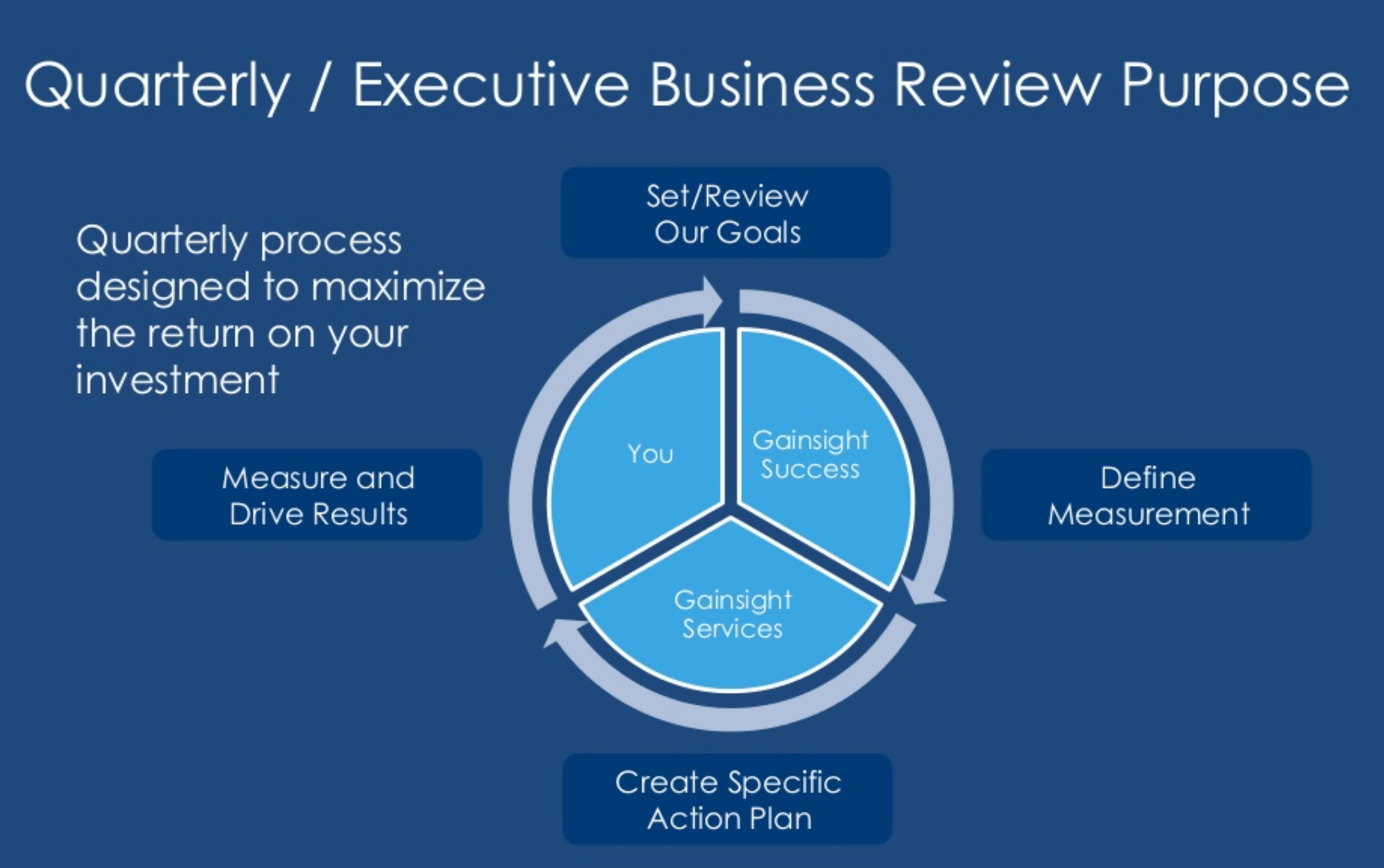Providing Customer Value Through Quarterly Business Reviews

Customer success is about helping your customers realize value with your product. But how do you ensure each one is having a positive experience? And if they aren’t, how do make changes so that they do?
Through quarterly business reviews.
A quarterly business review is a once-per-quarter meeting with a customer where you (the CSM) discuss their business and how you can help. It’s a way to step out of the vendor role and position yourself more like a business advisor.
“A QBR should be a collaborative time to understand from ALL angles what worked well, what tools were used or weren’t used, what went wrong during the quarter, and what will be different in future quarters,” says Teresa Becker, customer success strategist at Client Success.
In some organizations, QBRs are called executive business reviews (if they aren’t performed exactly four times per year) or simply, business reviews.
QBRs have three powerful benefits:
- It’s an opportunity to make the customer aware of the value that you have already provided.
- It’s an opportunity to create future plans to provide more value.
- It’s an opportunity for you to learn more about your customer.
In a perfect world, you would be able to deliver a QBR to every customer multiple times per year; but resources are limited, so that isn’t always the case. If you can’t deliver them every 90 days, drop the Q from QBR and push it as a “special service.”
Only select customers should receive QBRs
QBRs are not small projects. They should be thorough presentations of the SaaS/customer relationship, which requires serious preparation. You can deliver them as a document or slide deck, but in-person meetings are best. This means you can’t deliver QBRs to every customer.
There are a lot of ways to segment your customers, so I’ll leave that to you. You should reserve QBRs for top customers – the ones who are paying the most and who have the largest expected lifetime value. You might also want to include some customers who have the most potential and the ones who are in most need of value or they will cancel.
Like anything else, turn QBRs into a process
Naturally, you should create a process to prepare and distribute your QBRs.
“Preparation before a QBR is vital,” says Sonia Siganporia at Strikedeck. “And, you should plan what you will say during the meeting, as well as formulate presentations that display your progress toward mutual goals.”
A branded PowerPoint template will usually suffice, but customize it so each customer receives a personalized experience. You’ll likely include similar data points for all of your customers, but they will vary on some level, so customizing their reports shouldn’t be difficult. Make the customer feel special by sneaking in specific terms about their business.
Give your meeting a structure that’s defined in a handout or media. Don’t read everything you wrote. Trust that the customer will review the finer points.
Some QBRs can last as long as two days, which is crazy. Your customers will dread attending those meetings, which affects your relationship. Limit your meetings to one to two hours. Keep in mind, you may spend just as long (or longer) preparing for the meeting.
Depending on the nature of your business and customers, you might want an executive to sit in on the presentation. This makes it easier to coerce one of the customer’s executives to attend as well, turning this into a higher level meeting (more value!). You’ll need a process to coordinate these meetings (whether they’re in-person or over the phone).
The presentation is also a good time to open up about your team and business. It is also a great time to solicit feedback. Customers like to see that you have a plan for your own growth. It makes them feel like you’ll attend to their growth as well. If you have new products coming out or new plans in the works, be open.
QBRs should be focused on strategy

Your QBR should focus on high level strategy, not granular tactics. Feel free to be transparent with the customer about your internal data, metrics, and conclusions. Remember, you want to be an advisor, not a vendor.
You might discuss topics like…
- Further phases of the product’s implementation or onboarding process.
- Results from the previous QBR and whether you met the previous goals.
- Obstacles ahead and how to overcome them, especially if you can play a role.
- Current ROI from the product (may not be in terms of dollars, but could be if you have that information) and how/whether it will continue.
- Where the customer is in the SaaS lifecycle, what the next stages are, and how/when they’ll get there.
- The customer’s health score, how it’s created, how it changed, and what can be done to keep it nice and high.
- Problems they experienced, how they were solved, and what steps were taken to prevent them in the future.
- Any outstanding problems that are awaiting solutions.
- How the customer compares to other customers.
- Their usage trends (user accounts, features, etc.) and how the customer can get more value from the product.
- Products/features/expansions that may add value to the customer. This is a slight opportunity to upsell, but don’t get crazy. Focus on adding value to them, not yourself.
- Goals for the next quarter and how each party will be involved.
The tactics to achieve the customer’s goals should be discussed in another meeting, without executives. Don’t get mired in details here. You can hash out action items when you speak to your customer/contact between QBRs.
The meeting should end with an agreement as to the next success milestones. While you should bring recommendations, be prepared to accept the customer’s input. The best CSMs listen carefully throughout each quarter whenever they speak to their customers and take notes regarding any goals, wishes, or dreams they hear, and then incorporate those into the QBR.
Make sure the success milestones you set are actually achievable. If you agree to too much, you risk coming up short. Agree to one or two goals that you’re sure you can hit, then privately commit to an extra one that you can surprise your customer with.
Your goals should benefit the customer, not you. It’s tempting to push the customer down whatever road leads to a guaranteed renewal or account expansion, but that’s a short-term strategy that doesn’t create long-term retention and predictable revenue. If you create and achieve goals for the customer, renewal/expansions are easy sells.
Best practices for preparing and performing QBRs

Your QBRs should be engaging and enjoyable. Don’t spend two hours reading data points while your customer falls asleep. Keep your information succinct and easy-to-understand.
If possible, have experts weigh in. Data conclusions sound better coming from a data analyst, even if the information is all the same.
Don’t be afraid to be honest about any goals or aspirations that weren’t met. As long as you aren’t failing too often, these conversations make the customer feel more comfortable about what you do achieve.
Give the customer time to contribute. This is not a lecture! “It is virtually impossible to gain a better understanding of your customer’s needs if you are talking 90 percent of the time,” recommends Alex Raymond, CEO of Kapta. Ask questions and take notes.
Put plenty of emphasis on what the future holds and how you’ll provide value. Yes, this means that you’ll commit to more work and better results. Time to up your game!
If a customer isn’t satisfied with the results (or the overall service), QBRs can quickly turn negative. Before the meeting begins, remind all customers that this isn’t the venue for venting. Remind them that everyone should be focused on improving future results.
Don’t blow these opportunities
A quarterly business review is a fantastic opportunity to deliver personalized value and reinforce the relationships with your customers. If you prepare carefully and present your review well, you can make your customers feel like they have a strong partner on their side, not just someone after their money.

